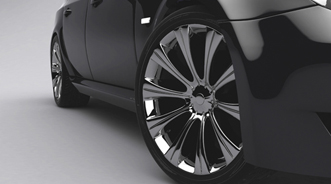Expected High New-Vehicle Registrations for 2013 May Boost Used Sales

News hit the stands Tuesday suggesting that 2012 marked the best used-vehicle market in five years, as CNW Research reported that full-year used sales came in at 40.5 million units.
However, the jury is still out when it comes to predictions for 2013.
But as many industry experts voice expectations for record level new-car registrations in the new year, it seems this trend may bode well for the used market, as well.
Polk analysts told Auto Remarketing that the economy’s performance will have a lot to do with how the car market pans out this year.
“In other words, as the U.S. economy improves, the ratio of used to new sales tends to decline. The same holds in reverse: as the economy slows down, the used/new ratio tends to rise. The generally accepted rationale for this relationship is that as the economy slows down, buyers tends to switch from new to used vehicles to save money,” Tom Libby, lead analyst for North America at Polk, explained.
And as it seems Congress has avoided the fiscal cliff and the economy continues to recover, Polk noted the general ratio of used to new sales in the U.S. — 3:1 — is bound to rise.
And the company revealed Wednesday that new light vehicle registrations in the U.S. in 2013 are expected to rise 6.6 percent over 2012 levels to 15.3 million vehicles, which are bound to bring in more trade-ins to dealer lots, as well.
“Used-car sales and new-car sales are complementary in nature, if the prices of one incline the other kind will also follow suit. Sales of new cars will determine the size of future used car inventory,” Ken Research shared this week from its report titled,“The US Used Car Market Outlook 2016 – Driven by Late Model Used Cars.”
To read more about the company’s predictions for used sales in 2013, see the Auto Remarketing story here.
Polk also provided information regarding what is pushing the expected new-vehicle registration surge.
First, Libby said “Exceptionally low interest rates promised for at least two years by the Fed” are providing a necessary push to new-car sales, as well as an improving U.S. economy, including employment levels and the housing industry.
Moreover, a high number of new model introductions and re-designs in the next 18 to 24 months, including several major introductions in important segments (i.e., GM pickups) are contributing, as well, according to Polk.
Libby also shared that the highways are seeing the oldest vehicles on the road on record, which will
need to be replaced “whether the driver wants to or not.”


